Cleveland is getting a park dedicated to its comics laureate, Harvey Pekar, whose long running American Splendor comic captured the quotidian lives of Clevelanders. The celebration will run all afternoon with music and a screening of the film American Splendor (for my money the best comic book movie of all.) The afternoon will see a […]
Viewing: Blog Posts Tagged with: Comics Still Wonderful In Spite Of It All, Most Recent at Top [Help]
Results 1 - 25 of 46
Blog: PW -The Beat (Login to Add to MyJacketFlap)
JacketFlap tags: Cartoonists, Comics Still Wonderful In Spite Of It All, Harvey Pekar, Joyce Brabner, Top News, Add a tag
Blog: PW -The Beat (Login to Add to MyJacketFlap)
JacketFlap tags: The Beat, Diversity, ethics, Legal Matters, Comics Still Wonderful In Spite Of It All, comics journalism, Top News, The Legal View, SDCC '15, Controversy!, Add a tag
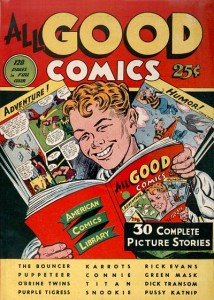 Reflecting on The Beat’s comics journalism ethics panel tonight at San Diego Comic-Con, my thoughts keep going back to the comics community – who we are, where we’re going, and what can keep us all connected however much we grow.
Reflecting on The Beat’s comics journalism ethics panel tonight at San Diego Comic-Con, my thoughts keep going back to the comics community – who we are, where we’re going, and what can keep us all connected however much we grow.
For all the online conversation, the panel went without incident. I ended up reluctantly having to cut off someone who I learned afterward was from the Gamergate perspective after his second or third point, but that was due to the program’s time limits and not any issue with his questions, which were thoughtful and well-received by the panel — the discussion of how Agent Carter makes a woman’s agency its central them was quite illuminating.
Jamie Coville will no doubt post the whole audio, so it’s only a matter of time before you too can hear the panelists’ brilliant insights, interrupted on occasion by my not-so-brilliant calling out their names: Heidi MacDonald, our intrepid leader; Donna Dickens, James Viscardi, Casey Gilley, Joe Illidge, and Brett Schenker.
One of the things that was great about this panel was that the speakers grounded their discussion of ethics in the comics community, and in so doing they expressed the essence of ethics itself. A lot of folks think of ethics primarily in terms of rules or abstract decision making principles, such as avoiding conflicts of interest or protecting the environment. Those can be important, but ethics is fundamentally an extension of ethos – it’s about who we are as individuals and groups.
And as becomes more than evident at conventions, comics people — and gamers, genre film & theater folks, and everyone else in this extended happy network of geeks, nerds, and dorks – are more than just faceless consumers. We’re a community connected by shared interests and values, and we’re all part of the conversation, not just the people who self-identify as journalists or scribble online. We don’t agree on everything, of course, but as the panel emphasized, by following the fundamental ethical principles of understanding and mutual respect, we can talk about our differences in ways that only strengthen our bonds.
However, as the panel also noted, our community of communities is growing to scale — our little niche interests have gone truly global, and even as we engage each other over whether various items and actions truly reflect our communal values, millions of people are coming to the stuff we like without a thorough grounding in our up ’til now shared experience, let alone the unassailable arguments as to why Crisis on Infinite Earths was the greatest crossover of all time. The influx of fans has tremendous potential for extending our community’s influence, but it also brings with it a heightened risk of fragmentation to the point of dissolving, or at best reducing to a network of shared interests that doesn’t go beyond what we see on a screen.
So we talk and write, explain and argue, with neutral just-the-facts articles when they help us gather useful knowledge and principled arguments for what we believe is right. That’s what we’ll all keep doing online and ultimately, that’s what makes comic-cons so important. Just as they gave us a chance to talk about what we talk about when we talk about ethics, they provide a forum of all of us, old and new, to learn about each other and ourselves.
Blog: PW -The Beat (Login to Add to MyJacketFlap)
JacketFlap tags: Comics, Comics Still Wonderful In Spite Of It All, Top News, Top Comics, Beat Birthday, First Comics, Staff Opinion, Add a tag
Everyone remembers their first. Comic. Whether it was a Peanuts strip, an X-Men floppy, or the collected run of Watchmen, we were all introduced to the wonderful world of sequential art in one way or another.
We at The Beat are celebrating the site’s eleventh birthday today and we were feeling nostalgic. Join us as we take a look back at our innocent geneses and reminisce about the books that shaped the people we are today.
Dave
Believe it or not there was a time where reading comics got you ridiculed or to a more extreme consequence beat up. In the 90’s, I grew up in a city adjacent to the NWA’s hometown of Compton. In those cities being different meant being a target. Growing up I never really had anything that spoke to me or felt like my own. In order to fit in with the rest of the kids in school you either had to listen to music on KROQ and POWER 106 radio or know everything there is to know about basketball and football. Being 12 years old nothing was more important than having friends, so I did what any kid my age would do, I followed. Even in wearing the right team or having the hot CD; I managed to be the sore thumb that never got picked for a team or invited to a birthday party.
For a long time I felt like there was something wrong with me. One balmy September day, on a grocery trip with my mom at a Lucky’s in South Gate; I found myself lost in the magazine aisle flipping through Gamepro and Electronic Gaming Monthly. Then I saw someone fill a rack next to all the magazines with what looked like smaller ones. She dropped one and I picked it up off the floor, it was Jim Lee’s X-Men #4. Something about anger on Wolverine’s face and the confident shear on Gambit that dared me to open it. I’d never read any comic and I only knew Batman from cartoons. The story of a group of people who had to live apart from society because they were different. It was me. That day, comics found me. I had something to grow up with that felt like me. Today that comic sits torn and crinkled in my collection, but it’s pristine in the long white box of my heart.
Zach
I can’t remember what the first proper comic I read was – but I do remember having a odd almost guidebook to the origin of the X-Men, published by Scholastic (previously DK Children), which essentially guarantees that it was desperately trying to educate me. If I remember correctly, I could school anyone in the X-Men so long as the information was in the hopefully still up to date Story of the X-Men, How It All Began. That doesn’t really count, as it was a book about a comic, not a comic itself. No, the first comic I bought with my own money was a copy of the weekly Shonen Jump from December 2003.
I remember because it had the first chapter of Hikaru no Go in it (literally about a boy who gets periodically possessed by a ghost who wants to play a slick game of Go). I was young, foolish, and ate it up. Soon I was well on my way to being one of those kids sitting for hours on end in the manga section of my local Bookstar (owned and operated by Barnes & Noble) taking full advantage of Tokyopop’s incredible localization scheme of “throw it at the wall and see what sticks”. Viz, to their credit was a little more selective. My favorite series, and the first I caught up on Shaman King and though the serialized chapters only lasted until 2007 – I deeply loved it. Tokyopop didn’t actually care what they brought over so long as it could be rapidly translated to an acceptable degree of readability; it was a golden era, safe to say. I would read Samurai Deeper Kyo or GetBackers when Shaman King or One Piece just weren’t doing it for me (who am I kidding, One Piece is the best). Huddled betwixt those shelves, I found formative works like Battle Angel Alita and Claymore which still influence me to this day.
Though I found Sandman in high school, it wasn’t until I was shown the modest but diverse collection of comics in my college’s library did American comics hold my attention. I have no idea where any copies of my comics pre-2007 are but I can tell you in earnest that they were loved.
Alex Jones
My first comic ever…that’s a hard question to answer. As a younger reader, I jumped on around high school during a vacation in Hawaii. Being a major geek, I was thoroughly interested in Blair Butler’s comics analysis on Attack of the Show — which originally scratched my love of gadgets and nerd news. After watching her rave about All-Star Superman #10, I decided to give the issue a shot when I was browsing through a comic rack in Maui. Also, I picked up the New Avengers issue with Echo, number 39. I didn’t understood the nuance of All-Star Superman #10 until years later, but the comic still struck a chord with the Frank Quitely artwork. I was also charmed to meet Grant Morrison years later, who is so lovely and supportive of comics fandom in person — it doesn’t hurt that he’s one of the best writers in comics either.
Alex Lu
I could answer this question with a lot of different books and they’d all technically be correct. If we’re talking about the first book that got me hooked on comics, we’d be talking about Tsugumi Ohba’s and Takeshi Obata’s Death Note. Their thrilling tale about morally ambiguous (but really morally reprehensible) characters attempting to outsmart each other with careful strategies instead of testosterone-driven brawls was perfect for the twelve year old who hadn’t seen the appeal of physical action at the time. If we’re talking about American comic books, we’d be talking about Jeff Loeb’s and Tim Sales’ Batman: the Long Halloween, which proved to me that superhero stories didn’t always follow the juvenile and simplistic tropes I had grown up being told they would.
However, the first comic I ever read was Bartman: Best of the Best.
Truth be told, I don’t remember very much about this book; only vague bits and pieces spring to mind when I think about the stories contained within the collection. However, when I assemble those small memorable fragments now, what comes together is a very clever book. The first story in the collection is entitled “The Comic Cover Caper” and on the cover, features Bartman hanging over a vat of silver foiling. The plot focuses on the “cover enhancements” that were all the rage in the 90s when this book was first being published, and satirizes the ridiculous idea that a little bit of emboss or a triple gatefold could potentially raise the value of a unlimited print run comic to Action Comics #1 prices.
I first encountered this book and The Simpsons TV show when I was around four years old. At the time, I didn’t understand the true depth behind either one. I simply loved the irreverent natures of the characters and the colorfully rambunctious animation. Perhaps it’s time for a nostalgic weekend marathon…
Kyle
I’ve been reading comics for about 25 years or more, which doesn’t make me old by any stretch of the imagination (I’m 32, for the record), but I do have quite a comic book reading past behind me that just continues to grow. This also makes remembering what my first comic was rather difficult, as my memory of those years continues to fade away. Most of my comics reading came from my uncle, who passed along titles like Marv Wolfman and George Perez‘s New Teen Titans, and got me hooked on The Legion of Super-Heroes, which started an obsession that I’ve never been able to shake.
My uncle had a number of longboxes he kept, filled to the brim with “Silver Age goodies” as he’d call them, I remember specifically that he had the first appearance of Supergirl, the Superman Red/Superman Blue issue, along with a full run of many titles like Adventure Comics and The Brave and the Bold. But one of the boxes he had stuffed away contained two very seminal indie works that changed my perception of comics forever: Evan Dorkin‘s Milk & Cheese and The Hernandez Bros‘ Love and Rockets. The latter of which, with its magical realism and punk rock energy remains my favorite comic of all time. Sure, there are things that occasionally challenge it for the crown: Maus, Palookaville, Criminal, The Invisibles, From Hell, there’s always something; but the sagas of Maggie, Hopey, Ray, Luba, Carmen, Heraclio, and a cast so rich I can’t even begin to list them all, has a hold on my heart like nothing else. I’m not sure it’s the first comic I ever read, but it’s the first comic I ever loved.
Matthew Jent
My big brother is 10 years older than me, so I was often running around in his wake blindly liking whatever he liked. He was a big comics fan, but in the mid-1980s our only options for getting comics were the spinner racks.
I had already been watching shows like Super Friends and (my fave) Spider-Man and His Amazing Friends, and I had a hand-me-down Mego Superman who was in pretty rough shape.
But it wasn’t until I was six and tagging along with my brother to Waldenbooks in the mall that I saw the comic book cover that made me say: I need to have that in my life.
Alpha Flight #23, the John Byrne run. Sasquatch fighting Sasquatch!
I had no idea who these characters were, but I liked monster and I liked (it turns out) when characters fight alternate versions of themselves. The issue featured a demon-possessed version of the hero Sasquatch in battle with Snowbird, a shape-changer, who (spoiler alert!) rips his heart out of his body and kills him. I read it over & over & over again sucking up every detail, searching for context.
Comics and superheroes had been around my house for years, but this was my first brush with non-A-list characters, and Byrne’s run on the book was one of tumult and constant change. Characters died, the team shifted, they fell in love with each other, they fought amongst themselves. This wasn’t just about the shepherding of lunchbox trademarks — this was storytelling.
I continued to follow Alpha Flight off and on as I found issues on the racks, or as another cover caught my eye. A few years later, writer Bill Mantlo brought Sasquatch back to life in Snowbird’s body, creating — kind of? — the first transgender Marvel Super Hero.
I’ve cobbled together a dollar box run of the Byrne/Mantlo Alpha Flight years, and nostalgia aside, it remains an underappreciated run of Bronze Age superhero stories.
Brandon Schatz
I always put a little asterix behind what I consider to be my first comic. It certainly wasn’t my first – that distinction would belong to a long forgotten Archie digest of some sort – but it’s the first that grabbed me and dragged me into the deep end of the comics pool.
This is a picture of my first comic, as it lives today. The cover fell off long ago, so I a young me decided it would be good to add more staples to the spine. It didn’t really work. That said, it’s a book I return to almost yearly to re-experience. Whenever I flip the cover off the rest of the comic, I’m hit with a wave of nostalgia. I remember paging through this what must have been hundreds of times, taking in some of the (admittedly cheesy) dialogue and completely missing how bananas it was that Ron Frenz was providing pencils that Bill Sienkiewicz would then go over. I mean seriously, Bill Sienkiewicz was essentially one of the co-creators of Spider-Girl and that’s insane to me now. But anyway, for those who want to check out that issue, it’s hanging up on the Marvel Unlimited app right now. As a word of warning, a lot of my love for it comes from a pure place of nostalgia. I recognize that in a lot of ways if this book came out today, I would be giving it side-eye like nobody’s business. But hey, in comics, there’s room for all types and all kinds. There’s room for your tastes to change, and for entire worlds to spread out before you. Its pretty wonderful, and I’m glad I got started on that road all those years ago with this book.
Victor Van Scoit
I wish that I could say the first comic book I picked up was a monumental moment. In reality it was likely a Disney comic in Spanish that I’d borrowed from my cousins to pass the time while visiting family in Mexico. What I can recall with much more clarity is that first real comic book moment. Where you think “Yes. This thing. It’s for me.”
My brother and I grew up on weekday afternoon and Saturday morning cartoons from reruns of the Herculoids to Johnny Quest, Transformers to Robotech, and Spider-Man and His Amazing Friends. My brother being six years older had much more access than I to money (a job) and mobility (a car). He was able to go on weekly jaunts to the comic book shop and return with a stack of bagged and boarded comics. His collection was kept tucked away in a long box on the bottom of his closet safely in his locked bedroom. As a younger brother’s curiosity is wont to do, I had made it my goal to make sure he share his riches.
I figured out through a few bouts of trial and error how to defeat the lock on his door. I then went to the closet, sat on the floor, and slid the heavy long box my way. Removing the lid I rubbed my fingertips with anticipation like Indiana Jones stealing the golden idol, and quickly let my fingers walk over his comic collection. I’d slide a comic from it’s bag and gently open it no more than two to three inches. Holding it so, my hands in a somewhat prayer form, I’d tilt my head side to side as I read. I read for a few hours safely knowing my brother was at work and wouldn’t return for a while. I don’t remember everything I read but certain images and titles stand out. I can recall reading through Classic X-Men, The West Coast Avengers, X-Factor, and Daredevil. I remember that feeling of satisfaction and discovery and the expansion of my tiny world.
When I was done I put every comic back in its bag and back in its exact location in the long box. I covered the box and slid the heavy box back in place over the indentation in the carpet of where it once was. I pushed myself up, walked out, and locked the door with no evidence of my cultural heist. That’s not to say I wouldn’t get caught various other times, but it was worthwhile. These minor squabbles between my brother and I led to my parents making him let me tag-a-long on his trips to the comic book shop with my own allowance to start my own collection of comic books.
Edie Nugent
Like many kids my first brush with comics were Garfield and Calvin and Hobbes strips, and giant treasury collections of The Far Side. But my first real immersion in comic books beyond one to four panel stories were Archie Comics.
I went to sleep away camp in the woods in Connecticut for a month each summer. It was *real* summer camp: platform tents in the middle of the woods. No electricity. No TV. Flashlight size C & D batteries became the most valuable currency a kid could have during those four weeks. When night fell and curfew kicked in, I’d hide beneath the cover of my sleeping bag with a canteen of water and Archie, Jughead and Betty and Veronica double digests. I followed the exploits of the Riverdale gang like some people watch soap operas. Though I was eager to experience the kind of freedom these teenage characters seemed to have, I knew that real teenagers weren’t this clean and all-American, at least, not the teens I saw growing up in New York City in the 80s.
But there was something exceedingly comforting about Archie and his pals, and as an awkward child coming of age and on my own for 30 days I often found myself handing over a few dollars in pocket money to my camp counselor to grab me the newest Archie digest on their way through the nearest town. Only counselors could travel “off campus.” When she’d return with my comics, just seeing the covers gave me the same thrill I still feel every time I pick up a comic book. I know there are stories waiting inside for me, that escapism is only a page turn away.
Later I’d fine Eastman and Laird and the Teenage Mutant Ninja Turtles, Spider-Man and (sadly) The Clone Saga. I’d even end up creating my own characters and forming a comics label with two of my classmates. But Archie was first, and sometimes when I see an Archie cover I can still smell that musty sleeping bag all around me and feel the excitement of summers that stretched on forever.
Nick Eskey
Looking back, I guess my comic reading started later in life than most can claim. It wasn’t that I didn’t like comics, but rather never was introduced to them. And my book reading was at a school requirement level at best.
What I loved were toys. That was my thing. I had a whole Teenage Mutant Ninja Turtles chest full of action figures and accessories. When the chest began to overflow, my toys spilled out onto my floor and then the carpet. Safe it to say my mom and I were very familiar with Toys R Us.
During one of my frequent visits, I was 11 years old and spending time that weekend with my dad. I was walking down one of the figure aisles when I saw wrapped in hard plastic, hanging from a hook, three comic books. It was a DC collection, with a giant sticker that claimed it was offering a great value. I was curious, and also fascinated with the packaging’s cover art. I grabbed one off the hook and my dad bought it for me.
After taking it home, and spending a good deal of time on the hard shell with a pair of scissors, I laid out the books leafed through them.
Two of them I don’t remember, but the third is still vivid in my mind. It was Batman: Shadow of the Bat #52. My only exposure to the Dark Knight at the time was the Tim Burton movies with Michael Keaton. But this was something different.
The first thing that caught me was the look. The art style was darker than any of the Sunday Funnies, both in color and content. The villain wasn’t any of the one’s I knew about, like the Joker or the Penguin. This was a guy named Narcosis. He wanted to put the whole city into a deep sleep using poisoned milk. For an eleven-year-old kid who loved his morning cereal, this messed with my head. I began to question hard whether I wanted my Frosted Flakes.
Batman and Robin had to intercept the milk before it was delivered to any innocent people, so the story took place in the early hours of the morning. Even I with my limited comic exposure knew then that Batman only operated at the dead of night. At the end, while Narcosis lay in a deep sleep from his own tainted milk, police argued with themselves that since it was daylight, it couldn’t have been the Batman.
Toys R Us didn’t carry comics for too much longer. But by then, I was finding my love for books like Goosebumps. Soon I came in contact with more comics from stores like Borders. My love of the Batman character also grew.
I’ve since ventured to other titles and genres in the years that came. But that one comic will stick with me for a long time I think.
Blog: PW -The Beat (Login to Add to MyJacketFlap)
JacketFlap tags: Top News, #fourcomics, Comics Still Wonderful In Spite Of It All, Add a tag
Jim Zub kicked it off:
Tweet four comics that influenced you when you were growing up. #fourcomics pic.twitter.com/qAqfLLOfst
— Jim Zub (@JimZub) January 22, 2015
And then the hashtag spread like wildfire. What four comics would you pick as the ones that influenced you? While I’m often preoccupied with the business machinations of the industry it is, in the end, something we read that moves us, entertains us. Or sometimes we simply to sit back and enjoy the beauty. The hashtag didn’t really spread to the indie cartoonists I follow, so while there’s a lot of Love & Rockets, there’s also a lot of Swamp Thing, a lot of Frank Miller, a lot of X-Men and Spidey, and a lot of Love & Rockets, but in the end, all that really matters is that comics are so cool. That’s why I’m here and you’re here. A selection:
Wish my #fourcomics were less obvious, but they're true. Encountered all at same formative time-made me want to write pic.twitter.com/xbMKdvXHxj
— Scott Snyder (@Ssnyder1835) January 22, 2015
These were my #fourcomics that rocked my world in high school. pic.twitter.com/P0LqC0xyn5
— Dan Slott (@DanSlott) January 23, 2015
These #fourcomics had the greatest impact on me as a youth: Elf Quest Usagi Yojimbo Battle Angel Alita Hellboy pic.twitter.com/aE0leL7j43
— Jake Parker (@mrjakeparker) January 23, 2015
These #fourcomics are four big reasons why I do what I do. pic.twitter.com/CBpMK8yZ7z
— Chris Ryall (@chris_ryall) January 23, 2015
#fourcomics that made an impression on me. pic.twitter.com/SuvU0UcvJa
— Gabriel Hardman (@gabrielhardman) January 23, 2015
#fourcomics that cracked wide the celestial vault pic.twitter.com/HUT7hrfZBu
— Adam Hughes (@AH_AdamHughes) January 23, 2015
My #fourcomics for various reasons I may get into with future tweets. Or next week's Pipeline. =) pic.twitter.com/ASVpuRubZB
— Augie De Blieck Jr. (@augiedb) January 23, 2015
#fourcomics that changed my life. One, literally… pic.twitter.com/z80lq7CBaE
— Jill Thompson (@thejillthompson) January 23, 2015
#fourcomics of many that got me started making comics. pic.twitter.com/wpK9SPOq9I
— Eric Orchard (@Inkybat) January 23, 2015
#fourcomics Individual issues I musta read a 100 times each as a kid: pic.twitter.com/PWBjuOUO7C
— Tim Seeley (@HackinTimSeeley) January 23, 2015
Here are the #fourcomics that have had immense influence at early points in my comic reading and subsequent career. pic.twitter.com/Arfh9xkhKP
— Jim Demonakos (@technogreek) January 22, 2015
The #fourcomics that changed my career path and life forever are the ones that made fall in love with the medium: pic.twitter.com/9apPhdvyrl
— Laura Sneddon (@thalestral) January 22, 2015
The #fourcomics that inspired me to make comics of my own. pic.twitter.com/DQazGwSlA4
— Aaron Diaz (@dresdencodak) January 22, 2015
Because everyone else is doing it… #FourComics that made me rethink what comics can do (and how they can do it). pic.twitter.com/dtok7cueae
— Graeme (@graemem) January 22, 2015
#fourcomics runs/collections I've re-read a ton, and I'm tempted to re-buy every time I see 'em. pic.twitter.com/iQavpdBCzM
— Alex Segura (@alex_segura) January 22, 2015
#FourComics that got their hooks into me before American newsstand comics ever got the chance… pic.twitter.com/FY5PgCOoB1
— Kurt Busiek (@KurtBusiek) January 22, 2015
#FourComics There were plenty of others, but these ones rose to the top. pic.twitter.com/acYc7Cdu7a
— Roger Langridge (@hotelfred) January 22, 2015
how on Earth can i possibly choose only #fourcomics? at the urging of my homeboy @ValiantJosh16, I gave it a shot pic.twitter.com/sCDgB1efMt
— Warren Simons (@warrensimons) January 22, 2015
#fourcomics (these are not the very first issues I read, but the first four titles that got me into loving comics :) pic.twitter.com/gXxMUP1goE
— FrancescoFrancavilla (@f_francavilla) January 22, 2015
Sure, I'll play. The #fourcomics that influenced me/rocked my young world the most: pic.twitter.com/R75u1D8B3G
— Mark Waid (@MarkWaid) January 22, 2015
These are the comics I look at a lot as an artist to stay hungry. #fourcomics pic.twitter.com/0TrTFKQXgm
— Sarah Horrocks (@mercurialblonde) January 22, 2015
My first #fourcomics – summer of 1983, roadtrip to Florida. Funny seeing this; it's a big part of my drawing DNA. pic.twitter.com/HUgAflFoT1
— Cliff Chiang (@cliffchiang) January 22, 2015
Every comic book I read influenced me, but here are #fourcomics that made me want to tell stories for a living. pic.twitter.com/rbXXtLEktW
— Van Jensen (@van_jensen) January 22, 2015
#fourcomics I read growing up, whose influences I still wear on my sleeve: pic.twitter.com/HxUbqQXBwe
— Becky Cloonan (@beckycloonan) January 22, 2015
I'll play your games… #fourcomics (but not all the comics) that affected me deeply as a kid. pic.twitter.com/mdBhj7JoGq
— Joe Harris (@joeharris) January 22, 2015
Didn't read a lot of comics as a kid, but these are the ones that made an impact and stuck (all Tintin). #fourcomics pic.twitter.com/m7z6qzH0LO
— Zainab Akhtar (@comicsandcola) January 22, 2015
I'll do a #fourcomics I guess. This is hard. I had way more than four. pic.twitter.com/BTEsSGiJAp
— Adam Koford (@apelad) January 22, 2015
Here are #fourcomics that profoundly changed me as a kid. @JimZub pic.twitter.com/mcLYvuS3nL
— Zachary Clemente (@clementeworks) January 22, 2015
#fourcomics @JimZub I was technically an adult when GloomCookie came out, but I was still "growing up." pic.twitter.com/PArx04xlsJ
— Jennifer de Guzman (@Jennifer_deG) January 22, 2015
I’ll do this, #fourcomics that made me love them. pic.twitter.com/8K7kFQELMg
— Heidi MacDonald (@Comixace) January 22, 2015
#fourcomics I liked as a kid pic.twitter.com/lPOVuOVauK
— Brandon Graham (@royalboiler) January 22, 2015
Tweet four comics that influenced you when you were growing up. #fourcomics pic.twitter.com/8E6ogUfFQY
— J. Torres (@jtorrescomics) January 22, 2015
Blog: PW -The Beat (Login to Add to MyJacketFlap)
JacketFlap tags: Comics, DC, Marvel, Commentary, Podcasts, Image, Comics Still Wonderful In Spite Of It All, Big Two Comics, Top News, more to come podcast, comic book podcasts, Add a tag
 Brought to you by Publishers Weekly, it’s More To Come, the weekly podcast of comics news, interviews and discussion with Calvin Reid, Kate Fitzsimons and The Beat’s own Heidi MacDonald!
Brought to you by Publishers Weekly, it’s More To Come, the weekly podcast of comics news, interviews and discussion with Calvin Reid, Kate Fitzsimons and The Beat’s own Heidi MacDonald!
In this week’s podcast the More to Come Crew discuss the big stories of 2014 month by month, including gains and growing pains in the booming convention economy, rising industry awareness of reader diversity, wage stagnation at Marvel and DC and the talent flight to Image and much more.
Download this episode direct here, listen to it in streaming here and catch up with our previous podcasts on the Publishers Weekly website, or subscribe to More To Come on iTunes
Blog: PW -The Beat (Login to Add to MyJacketFlap)
JacketFlap tags: Comics Still Wonderful In Spite Of It All, Top News, spx 2014, Indies, Cartoonists, Add a tag
You can read my official SPC report at PW, with news and notes, but I’m guessing that everyone who was at SPX is probably, like me, realizing that the magic is over and we have a whole year to go, or maybe a few weeks if you count APE, but in the meantime, I can keep the magic going a few moments more by rounding up some of the magical, mystical memories of SPX. I said there were a few people who didn’t have a good time, and you can find one of two on Tumblr who sat outside hotel rooms sadly waiting for the person with the key to come back. But if you could open your heart, SPX would make you love it. As the above picture shows, SPX is the only con where you can find Julia Wertz and Renee French just sitting and smiling with each other. It’s also the only place where someone would leave their computer just sitting out on a table (as one prominent comics personage di don Friday)and feel pretty secure that it would be just fine. There is a reason why people puts up so many pics and blog so much about this show—it’s a full on love affair.
§ Webtooner Even Dahm gets right to the heart of the matter comparing SDCC with SPX—really the indispensable alpha and omega of US shows:
SDCC was fun but kind of discouraging, and presents an image of what is now, I guess, the Entire entertainment industry in a bluntly capitalistic way: the most space is given to the companies with the most money for it, and the events and products are talked about according to a similar hierarchy. I don’t like it but it makes its own kind of sense and it’s how things are: work that makes money has more mobility in the culture, and barring any strongly-principled management at events like this, the amount of money the work makes will be the thing that decides its place. I try really hard to not get pessimistic about this. And of course popular things can be quality things! I like a lot of popular things. But the connection between popularity and your or my specific notion of quality is tenuous.
I leave SDCC and shows like it having spent huge amounts of money the exhibit there and feeling like what I’m doing is insignificant and untenable. I want to emphasize that this is an issue I have with the philosophy of the show, not with the attendees. I have met some very excellent people who attend SDCC every year.
I came out of SPX this year extremely excited about the huge volume of beautiful and idiosyncratic work being produced by artists working outside of entrenched & monied institutions. It’ll never be the same amount of room as the Marvel Cinematic Universe or whatever, but there is room in the culture for this stuff, in terms of attention and money and enthusiasm. It’s hugely inspiring to me to see so many people making work independently or with publishers they know personally and believe in, and seeing that a lot of that work is sustainable for them, and seeing that a lot of it takes full advantage of its independence by being brutally honest, or strange, or socially conscious.
§ Loser City’s David Fairbanks, an occasional Beat contributor, made his first journey and was swept off his feet:
The next two days were a blur of comics with SPromX right in the middle, and I can honestly say I have never been in an environment that was so pro-comics. Whether you had been making minicomics as long as folks like John Porcellino and James Kochalka, you were a cartoonist fresh out of (or still in) school, or you had never once put pencil to paper to craft a comic, you were among peers. I think I speak for most of the attendees when I say that the environment at SPX felt like home, despite knowing virtually no one there before my plane landed. Over the course of the first twenty-four hours, I made fast friends with artists and fans, and I get the feeling these are friendships that are going to last. From the (sometimes exhausted) smiles I caught on the faces of nearly everyone there, I would imagine I was not alone in my joy, and I think a great deal of it stemmed from the communal feeling of SPX.
§ Even grizzled veteran Derf shared the love:
This year’s theme was a celebration of the alt-weekly cartoons, from Jules Feiffer to the end, which I believe was reached sometime last week. It’s something that is long overdue. The peak of the genre, from 1985 to 2000, produced, in my opinion, the finest, most original comix of the time. Discounting hacks like me, of course. We were always kind of the bastard stepchildren of both the mainstream comic strip community and the indy comix community. I always felt like an outsider to both. Now I’m a B-minus Indy Comix Star, so those days are behind me, as are comic strips, but it’s nice to see the genre get it’s due.
§ Jane Irwin, like many, had a stellar show sales wise:
This year I had the best SPX I’ve ever had — but for some reason I neglected to take any photos other than the sad, blurry one at the top of this post (the lettered balloons were to identify the blocks of tables — I was in the “L” block). It may have been because I was just so busy at my table — the crowds were incredibly heavy and were extremely generous — I heard some folks could barely stop selling long enough to go to the bathroom, and several people sold out of books entirely on the first day, including C. Spike Trotman and my next-door neighbor, Pregnant Butch author A.K. Summers. I sold out of Clockwork Game mid-day on Sunday, but I was able to take orders for a few more copies (they went out this afternoon, and should arrive soon!) and I know I could’ve sold a dozen more, if I’d only had them on hand.
§ Roger Langridge didn’t even break even and he still had a great time:I attended SPX this past weekend. As usual, I had an excellent time. Despite it not being a successful trip from a financial point of view (although I covered my biggest expense, I’m still somewhat out of pocket at the end of it) I’m really glad I went. I find I need SPX in my life every so often as a kind of course corrective; a reminder of the kind of comics I ought to be doing.
I have a really strong attachment to this show. SPX was the first show I ever attended in the USA, back in 2000. I was just there as a visitor, not even as an exhibitor; it was the year Will Eisner was there, I remember. I bought minicomics from Craig Thompson. I met Dean Haspiel for the first time, who went out of his way to make me feel like a part of the community, which I will always be grateful for. Attending that show energised me to turn my Fred the Clown webcomic into a self-published comic book, which in turn has led to every opportunity I’ve had in comics since then. Without SPX, it’s probably fair to say that my subsequent career wouldn’t have happened.
So I keep coming back. Not every year, but I try to do at least every other year. And each time, I feel like it’s a timely reminder that these are the kinds of comics I ought to be doing: comics straight from the cartoonist’s brain to the reader’s hands, without compromises.
§ It’s not just a place to hang out! You can get work!!! Game designer \ Daniel Solis says it’s a great place to find new talent. And I know animation scouts go every year:
I came into the fandom a bit late, but it’s such a welcoming and vibrant community that I never felt out of place. After weeks of awful news coming from gamer culture, it was such a positive experience at SPX seeing diverse creators and fans in a niche community all supporting each other. It can happen, people! I’ve seen it! But I really recommend SPX to tabletop game designers because it is an excellent place to network with lots of undiscovered and rising talent. You can check out the artists I talked to at SPX on my pinterest board here. Specifically for “SPX 2014″ tag in the description. Also check out the SPX Tumblr and Twitter feeds for more cool arts.
§ Joshua O’Neill of Locust Moon captures the unique nature of Camp Comics at the Marriott:
As usual, half of the reason for the glory of SPX is due to the Bethesda Marriott Hotel, whose comfy confines are given over completely to the endless array of misfits that we call a comics industry. It’s more than just a con venue — it’s the eye of the storm, for one brief weekend this one building is the center of the comics universe. You exhibit there, you drink there, you draw there, you sleep there. (You eat elsewhere and abruptly realize there’s such a thing as outside.) By the end of the weekend it feels like home. I’m not sure Jesse Reklaw ever put on a pair of shoes. To the maids and bellhops it must be kind of like going to the zoo, if the animals were all inside of your house. Their hospitality was stunning, and can in no way be attributed to the eight bazillion dollars they generated in overpriced drink sales.
And visual representations:
OMG, someone on my flight back home is reading a copy of my book. Someone I don’t know!
— Nick Sumida (@nsumida) September 14, 2014
Still processing the joy ;) http://t.co/3idQSAxGsF Big THX to everyone who made all the @SPXcomics magic happen pic.twitter.com/15oGSRjqvd
— Connie Sun (@dearconnie) September 15, 2014
And so on and so forth….I probably could have found a half dozen more similar tributes, but I’ll leave with just a few representative photos.

Am I the only person who caught the TV in the bar switching from football to vibrator infomercials on Friday?
Can you believe these people are all FIRST TIME SPXers? Okay Chris Butcher went before, but he hadn’t been to the “new” venue, which is really the only venue most people know. Amy Chu, Louie Chin, Murilo, Butcher and Brigid Alverson were all converts by the end of the weekend.

Fun and frolic at the SPromX. Looks like it will be back next year…and so will I.
Blog: PW -The Beat (Login to Add to MyJacketFlap)
JacketFlap tags: Videos, weddings, Comics Still Wonderful In Spite Of It All, twiddle rompus, Michael DeForge, Top News, spx 2014, simon hanselmann, gary groth, Add a tag
At SPX, following the Ignatz awards, a very special wedding took place, as cartoonist Simon Hanselmann, author of Megahex, wed comics in a ceremony presided over by SPX Executive Director Michael Thomas. Michel DeForge, currently on tour with Hanselmann, stood in for comics, althuogh several acual comics were present. Hanselmann, who is a cross dresser, appeared in a lovely wedding gown, and a brass band serenaded the wedding party which consisted of Annie Koyama, Annie Mock, Jason Leivian, Sean T. Collins, Julia Gfrörer and Gary Groth.
When I first heard about this, I thought it was going to be funny but cringeworthy, but it turned out to be funny and memorable in a very performance arty way. Hansellman wrote vows that were amusing and accurate at the same time, and since everyone falls in love with comics all over again at SPX, making the union legal seemed a very appropriate thing to do.
As you’ll see, the big moment came when Hanselmann’s publisher Groth jumped up at the end to kiss the bride and kiss the two did. Which again, is usually what happens when you fall passionately in love with someone, or even comics. Brigid Alverson has some still photos and the money shot but you’ll have to go here to see that.
After the ceremony, Hanselmann cut a giant wedding cake, eventually tearing out chunks with his bare hands and giving them out as other attendees cavorted around the chocolate fountain and an equally enthusiastic and fun prom got under way a few meeting rooms down. People will be saying they were there for this for years to come. The social aspect of SPX has always been one of the biggest appeals of the show—I remember back in the day at the picnic people climbed trees and threw water balloons at each other. In a wacky way, this was the perfect update.
This was DEFINITELY an SPX to remember!
Blog: PW -The Beat (Login to Add to MyJacketFlap)
JacketFlap tags: Books, Comics Still Wonderful In Spite Of It All, Top News, Add a tag

Okay this isn’t “The Comics Diversity Times” but, issues of diversity and identity seem to be the most pressing ones these days. And so to cleanse the palette, here’s a transcript of Gene Luen Yang’s speech at the 2014 National Book Festival this weekend. With American Born Chinese, Boxers & Saints and now The Shadow Hero, Yang has become one of the best selling and most important graphic novelists and he’s also one of those heroes I was alluding to earlier, standing up for people who don’t have as big a voice.
We in the book community are in the middle of a sustained conversation about diversity. We talk about our need for diverse books with diverse characters written by diverse writers. I wholeheartedly agree.
But I have noticed an undercurrent of fear in many of our discussions. We’re afraid of writing characters different from ourselves because we’re afraid of getting it wrong. We’re afraid of what the Internet might say.
This fear can be a good thing if it drives us to do our homework, to be meticulous in our cultural research. But this fear crosses the line when we become so intimidated that we quietly make choices against stepping out of our own identities.
After all, our job as writers is to step out of ourselves, and to encourage our readers to do the same.
Yang made a nice splash at erh National Book Fetsival and just to wrap that up, Raina Telgemeier, whose Sisters has just come out, also has a nice post and a photo of the standing room crowd for her talk:

So yeah, graphic novels did oooookay at the National Book Festival. Now on to Balitmore, SPX and the Brooklyn Book Festival!
Blog: PW -The Beat (Login to Add to MyJacketFlap)
JacketFlap tags: Events, Marvel, Iron Man, Comics Still Wonderful In Spite Of It All, Matt Fraction, Top News, Hawkeye, Blue Ear, Christos Gage, Paco Medina, Add a tag
Last year, Marvel received a letter from the mother of a young fan, Anthony Smith, who had hearing difficulties, and had been told by doctors that he would require a hearing aid. The mother was wondering if there were any heroes who had ever had hearing difficulties, who might serve as the inspiring spark for Anthony to accept the hearing device.
On getting the letter, editor Bill Rosemann not only pointed her to Hawkeye, who has in the past suffered from hearing problems, but also spread the letter to the Marvel offices.
And that’s what led Marvel to create a new character called The Blue Ear, who doesn’t let his hearing problems stop him from saving the day. Created with Marvel staffers Manny Mederos and Nelson Ribeiro, the character is based on Anthony himself. You can read Blue Ear’s origin story in my original post announcing the character,
Now, though! That’s not the end of The Blue Ear’s work with Marvel. Last month Marvel held a special event honouring him, as they partnered with Phonak, a hearing aid supplier. Anthony and his family were invited along, as Marvel unveiled a new poster which will be distributed nationally, in which we see Iron Man meet a young boy who is being bullier for having a hearing aid. Written by Christos Gage and drawn by Paco Medina, the poster encourages people to never feel like they should be ashamed of their disability:
The event also saw Iron Man attend in person – awfully nice of him to teleport over from the 616 Universe – and meet Anthony. After receiving a copy of the poster from Iron Man, the Avenger also then gave him a second gift – an Iron Man costume of his own.
Which, he immediately put on.
As I said last time – isn’t it now time for The Blue Ear to join The Avengers?
Blog: PW -The Beat (Login to Add to MyJacketFlap)
JacketFlap tags: Comics Still Wonderful In Spite Of It All, Asterios Polyp, David Mazzucchelli, driving videos, Russian Meteor, Add a tag
If you heaven't read David Mazzuchelli's amazing graphic novel Asterios Polyp, please avert your eyes NOW. The award winning GN and book of the year in 2009 was a sly comment on art through the life of a man named Asterios Polyp, who finds potential happiness in life just in time to [SPOILER ALERT] have it potentially snuffed out by having a meteor fall on his house.
Blog: PW -The Beat (Login to Add to MyJacketFlap)
JacketFlap tags: Literacy, Comics Still Wonderful In Spite Of It All, Top News, Add a tag
If there's one trend we've noticed growing over the years its the use of graphic novels as teaching tools—on the must basic level, comics are now recognized as a way to get reluctant readers to get started reading. On a larger level, comics are being used as a general teaching tool. Josh Elder's Reading with Pictures organization has been promoting this idea and cataloging the use of comics in the classroom. It's not just the visceral appeal of colorful pictures that puts comics over—some think that the verbal-visual blend is the future of literacy, and comics could potentially be on the forefront of that.
Blog: PW -The Beat (Login to Add to MyJacketFlap)
JacketFlap tags: Awards, First Second, Comics Still Wonderful In Spite Of It All, Mark Siegel, sailor twain, Add a tag
Visit NBCNews.com for breaking news, world news, and news about the economy
Is no place safe from comics? Authors David Baldacci (Absolute Power) and Gillian Flynn (Gone Girl) appeared on The Today Show to pick 10 holiday books and one of those Flynn picked was the graphic novel Sailor Twain by Mark Siegel. Flynn called it ”Steamboats, romance, and mythology, and a search for love universally – it’s really a haunting book.”
The Sailor Twain reference is at about 2:12 in the above video.
The Year of Graphic Novel Mainstream Promotion is definitely going out with a bang.

Blog: PW -The Beat (Login to Add to MyJacketFlap)
JacketFlap tags: Reviews, Comics, Monkeys, Weekend Reading, Downloadable Comics, Comics Still Wonderful In Spite Of It All, Digital Comics, Chris Sims, Grace Allison, Josh Krach, Monkeybrain Comics, Kevin Church, Steve Downer, Add a tag
BY JEN VAUGHN – If you are one of the last souls who has yet to buy WANDER or DRACULA THE UNCONQUERED #2, allow me to convince you. Put away that latte money for I have something better for you to enjoy.
In WANDER, Writer Kevin Church, along with artist Grace Allison, follows about Olive Hopkins, your typical grad-school-esque malcontent who can tell her Master’s degree is only going to permanently cement her job behind the barista counter. Be it magic or some heavy, regrettable drinking, Olive wakes up in a land beyond, full of swords, sorcery and adroit companions such as an elf and Dwarf. Olive, it seems, can shift through dimensions but unholy havoc could this bring to both worlds? Church is oh-so clever and delivers at least two, wait THREE, hints disguised in the full Wander package.
The team of creators spin such a yarn that the $2 price is almost maddening. The clean, sharp linework and cool coloring of Grace Allison often nicely contrast the nasty and funny ideas of Church’s story, instead of playing along. Below, even though jonesing for a slice of ‘za, Olive attempts to be open to new experiences.
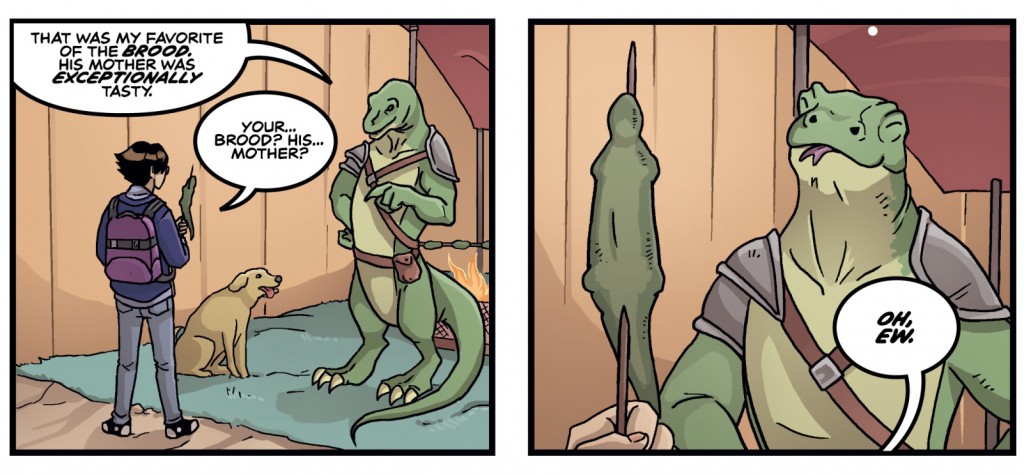 I’m a sucker for anyone who follows the add a dog for more cuteness rule.
I’m a sucker for anyone who follows the add a dog for more cuteness rule.
Luwhil the Dwarf is probably the favorite character so far, being ugly, sweaty AND a drunkard who calls people on their bullshit, compared to the acerbic and reluctant Olive or beautiful Monet of an elf (looks great far, obsessive close up), Shalwyn. Future issues will hopefully play up all their flaws.
WANDER is part of the amazing Monkeybrain Comics line-up bringing the world unique and fun digital comics, which leads up to Chris Sims (of Comics Alliance) and his independently published digital comic, Dracula the Unconquered #2. Sims is even hosting a contest to win a ohh-laa-la print edition of Drac #1 (WANT!) if you buy a digital copy of #2 by FRIDAY.
The second issue of Dracula the Unconquered by Sims, drawn by Steve Downer and lettered by YES, the same Josh Krach. When we last met Dracula, he had just woken up all sorts of grump
Blog: PW -The Beat (Login to Add to MyJacketFlap)
JacketFlap tags: Marvel Comics, Comics Still Wonderful In Spite Of It All, Hawkeye, Blue Ear, Marvel, Add a tag
Much of the recent focus on Marvel has seen them as a corporate behemoth, crushing the innocent as they march across America in their golden boots. But a recent news story reported by the Huffington Post reminds that the people working for the company are still doing everything they can to support and entertain their fans, and help out wherever they can.
When 4-year old Anthony Smith, a young comic book fan with hearing impairment, was told by Doctors that he needed to wear a hearing aid, he refused. He didn’t want to feel like he stood out and was alone. So his mother, superheroic Christina D’Allesandro, sent an email to Marvel comics, asking if there were any examples of superheroes who also wore an aid - if she could find pictures showing her son that there was nothing unusual about wearing an aid, perhaps he’d change his mind about wearing one himself.
Not only did Marvel point her to a famous storyline where Hawkeye temporarily damaged his hearing (during his time with the West Coast Avengers, fact-fans); but editor Bill Rosemann decided to take Anthony as his inspiration to create a new superhero, called The Blue Ear.
Here’s a look at Blue Ear in action, as drawn by Nelson Ribeiro:
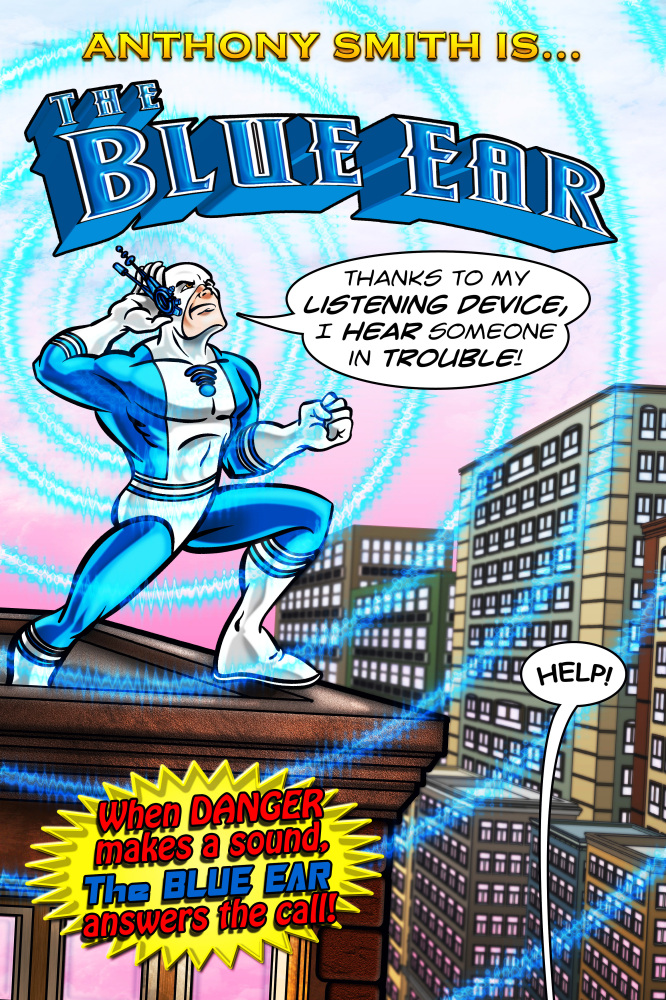
Bolstered by D’Allesandro’s email, a number of Marvel’s staff started to draw their own Blue Ear artwork, and sent it over to Anthony. And now he’s not only a superhero – but a superhero who hangs out with the Avengers, Anthony has now happily started wearing his hearing aid. After all, he’s got Hawkeye backing him up now, as drawn by Manny Mederos:

Now the only thing left is to bring him into Marvel continuity!
Blog: PW -The Beat (Login to Add to MyJacketFlap)
JacketFlap tags: Comics Still Wonderful In Spite Of It All, Add a tag
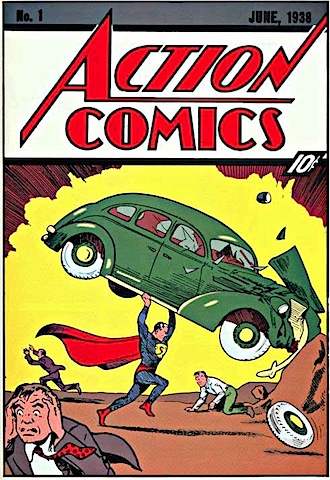
–The panelists of Mythic Fiction in Comics included Bill Willingham, Kurt Busiek, Chris Roberson, Matt Wagner, and Dark Horse editor Rachel Edidin and they all agreed that superhero comics were a dying genre. They also all thought that it would be beneficial for everyone to allow the characters to lapse into public domain.
Quoted by Matt Funk
Blog: PW -The Beat (Login to Add to MyJacketFlap)
JacketFlap tags: Art, Comics Still Wonderful In Spite Of It All, Add a tag
The industry has been asking itself some hard questions recently, and my tweets and email are full of people being depressed about things being so bad. As I always say, the comics industry can be horrid, but comics themselves are eternal. And you know what, when you get down to it the industry isn’t THAT bad either. There are some good eggs out there.
After I ran my “Person of the Year” piece, I received the following email:
Re. people of the year, I’m just writing to agree totally with you on your ‘anonymous assistance’ part. Having discovered comics only in the last three years, I never cease to be amazed by the generosity and kindness of the people in comics in this country (the UK). In my own profession, industry leaders would not speak to me (and I’m in my 40s and near the top), but it is not like that in comics. I’ll single out some senior guys in comics here: Sean Phillips, Duncan Fegredo, Jock, Peter Milligan, Phil Winslade, Mick McMahon, Rufus Dayglo, Rob Davis, Glyn Dillon, Simon Gane, and others. Drawings, criticism, encouragement and advice and most recently an ‘Is there anything i can do to help?’ I still find this shocking and I’m very grateful for the colossal amount of time people have given me. They really didn’t need to do that. Even things like Marvel portfolio reviews- I know they are meant to be a talent search and all. I met Steve Wacker at the end of this last year in Leeds. It was patently obvious I wasn’t going to work for Marvel, but he still gave me his advice- completely generously and usefully- for free. When you come from an industry where nobody gives anything away, comics is a shocking and special place. Everyone I’ve met so far has been lovely, which is helpful when you are trying to be creative. We should be grateful for this- and I am.
You know, we’re not so bad.
We’ll close out this week with some nice art.
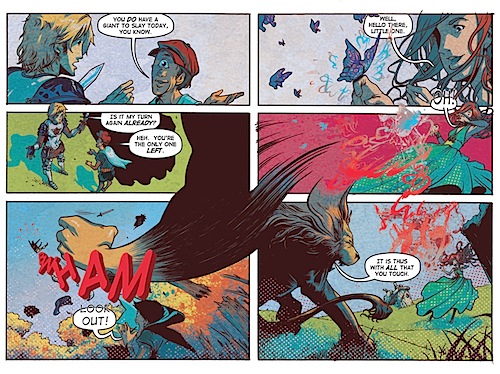
Another page of Sam and Lilah by Jim Dougan and Hyeondo Park, because he’s amazing and his work is beautiful. And comics, like I keep saying, are filled with some of the most awesome, talented people on earth.
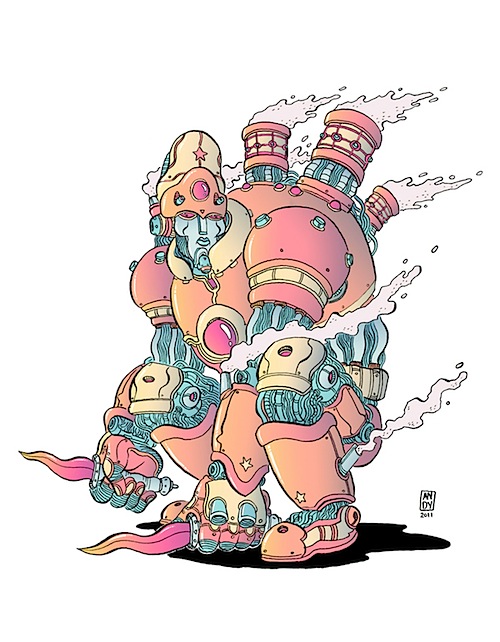
More art by Andy Kettler, whose SPX poster we featured earlier.
Blog: PW -The Beat (Login to Add to MyJacketFlap)
JacketFlap tags: Awards, Comics Still Wonderful In Spite Of It All, Add a tag
Over the now-four volumes we’ve been involved with (we’ve just wrapped selections for the fifth, but they’re still top-secret), we’ve tried to shine a spotlight on this list. As most guest editors point out in their introductions, the selection process, when it gets down to which stories make the cutoff for the volume and which don’t, can be alarmingly arbitrary. Often, we and the guest editors would love to include 50 stories, but there just isn’t room. But when you combine the notable list with the stories in the volume, it might be a little more possible to talk about representing what’s we actually think is best in a given year. Also, when looking for good comics to read, why limit yourself? We’ve always hoped readers will delve a bit into the list to find more great stories once they finish reading BAC.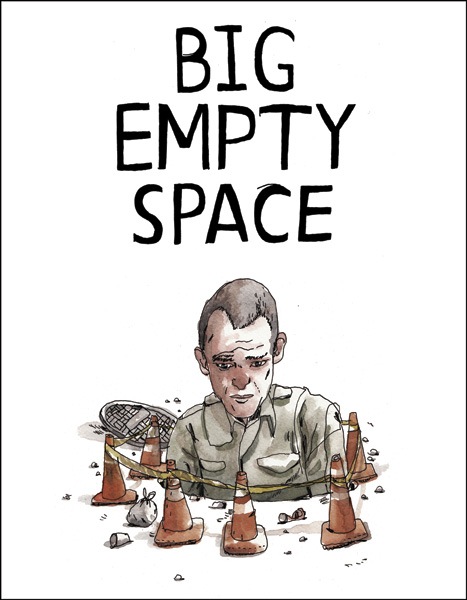
Best American Comics series editors Matt Madden and Jessica Abel have just posted the Notable Comics of 2011 list, those comics that did not make the contents of this year’s Alison Bechdel-edited book, but are still worthy of notice. The listing includes covers, links and more information:
Although it represents releases mostly from 2010, this is definitely as catholic and wide-ranging a list of worthy, readable comics as you could find anywhere, from formalist experiments to a smattering of books published by Marvel and DC. Please take a look and poke around — you might just find something you like.
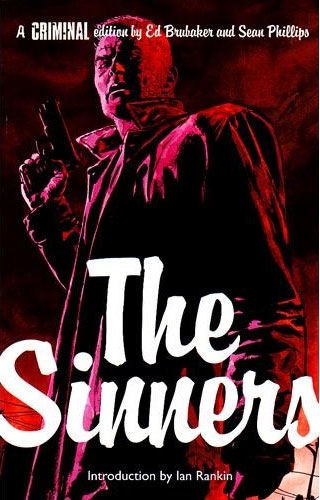
Oh yeah, they are also running some giveaways!
Blog: PW -The Beat (Login to Add to MyJacketFlap)
JacketFlap tags: Comics Still Wonderful In Spite Of It All, Add a tag
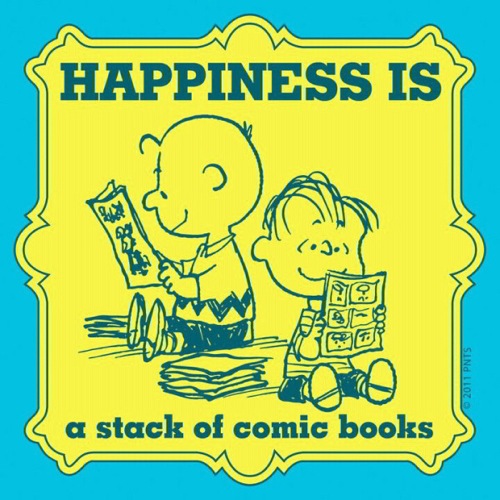
Whether you had a great week or a crappy week, this should tide you over the weekend.
Blog: PW -The Beat (Login to Add to MyJacketFlap)
JacketFlap tags: Comics, Kids' comics, Comics Still Wonderful In Spite Of It All, Add a tag
.
 Amid all the concern and conversation regarding the “nude 52”, we here at the Beat would like to remind our readers of a previous attempt to develop new comics readers by offering comics featuring strong, attractive, empowered female characters engaged in romantic pursuits with male protagonists.
Amid all the concern and conversation regarding the “nude 52”, we here at the Beat would like to remind our readers of a previous attempt to develop new comics readers by offering comics featuring strong, attractive, empowered female characters engaged in romantic pursuits with male protagonists.
A lack of proper distribution and fans angry at editors for altering storylines and characters were the two major reasons this franchise failed initially. However, it did convince others that there was a market for this type of comic, and within five years, had revolutionized the comics medium and marketplace, creating millions of fans.
Now, almost fifteen years later, this title is being revived, with the first volumes released this month in the shadow of the New 52. It is hoped it will catch lightning a second time, encouraging a new generation of readers and fans!
What is this mystery title?
Click here to find out!
Blog: PW -The Beat (Login to Add to MyJacketFlap)
JacketFlap tags: Blogosphere, Comics Still Wonderful In Spite Of It All, Add a tag

“You have a life-threatening condition,” the doctor said.
“We need to get you somewhere where they can operate on you,” he continued, the words tumbling out of him.
“We need to get you there immediately.” A breath.
“We have a hospital. We have a surgeon. When we have an ambulance, you’ll go.”
Unless you have been living under a rock, you’ve seen Tom Spurgeon’s essay on facing a life threatening illness, an illness which led to his unexpected blogging absence earlier this summer, and which still affects him, although he’s recovering. Since looking death in the face usually prompts some inventory of life, Spurgeon does just that in an astonishing essay that covers his life and his life in comics, if there is a difference. That a man fighting for his life should spend that time thinking about the Green Lantern movie is both ridiculous and awesome — Tom’s thoughts on why we chose the comics life and why we stay there speak for me about 80% of the time. It’s not that we have no choice, but rather why would we WANT to leave a field that is full of such honest, unpretentious work and creative, life-loving people?
I mean no disrespect to Tom’s great essay by linking to two others in the same post; but they amplify many of the same thoughts. This weekend Frank Santoro writes of a fun comics weekend in the city:
That’s when Dan waved his hand again because I was being too loud. What-ever! I was having fun. I can’t help it! See, the cool thing about comics is that if you hang in there long enough your heroes can become your friends. And what’s cool about comics people is that we all know how hard it is to do comics or publish comics or write about comics – and so there is a certain comfort in sharing stories because no one really outside of comics actually gets what comics is about. So this was an occasion to celebrate this most crossroads-y, interzone-y – most impure art form on the planet. I was happy.
And last week Becky Cloonan was asked about the freelance life and mentioned both its horrible drawbacks — long hours for little pay — and why it’s so great:
What makes it worth it though, is I love drawing. I LOVE IT. I love making comics. I love starting a new page and buying new paper, ink and brushes. I love telling stories! I love the people I work with, I love the people I meet. I love thinking about the syntax and language of comics. I love esoteric discussions about the comic book industry. I love the opportunities I’ve had in life because of comics. The second I stop loving it I will find something else to do. Comics are hard work. Comics are relentless. Comics will break your heart. Comics are monetarily unsatisfying. Comics don’t offer much in terms of fortune and glory, but comics will give you complete freedom to tell the stories you want to tell, in ways unlike any other medium. Comics will pick you up after it knocks you down. Comics will dust you off and tell you it love
5 Comments on Must Read: Thoughts on the comics life, last added: 8/16/2011Display Comments Add a Comment
Blog: PW -The Beat (Login to Add to MyJacketFlap)
JacketFlap tags: Comics, Memorial Day, summertime, Comics Still Wonderful In Spite Of It All, Add a tag
.
On Friday, May 25, 1984, in a small town of 1200 people, in a small grocery store on the highway not too far from cornfields, at the golden age of 14, I became a comic book collector.
What set me on this path that has led me >choke< 27 years later to be a comics missionary, spreading the four-color gospel far and wide? Well, I blame Morgan Freeman and Jim Shooter.
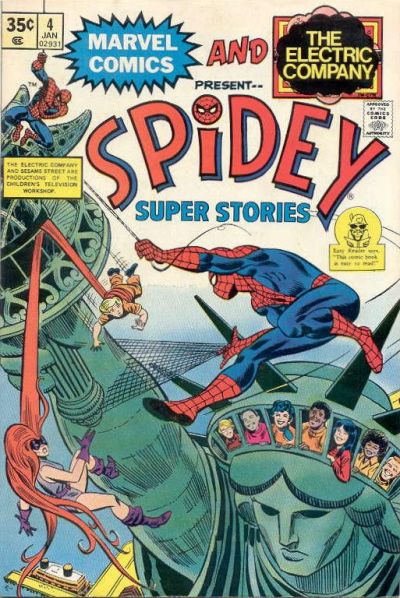 As a child of the Seventies, I would watch Sesame Street, and immediately after that, The Electric Company. During the 1974-75 season, TEC started showing episodes of “Spidey Super Stories”. These were comicbook/live action hybrids, mixing live action with drawn panels. Spidey usually had to thwart some crazy villain, and never spoke, except in silent word balloons which had to be read by the viewer. (My favorite villain: The Can Crusher, who, while visiting a tomato canning factory as a child, loses his pet frog in a kettle. Thus he spends his adult life crushing open tomato cans in supermarkets, searching in vain for his beloved croaker. *sniff* Such pathos.)
As a child of the Seventies, I would watch Sesame Street, and immediately after that, The Electric Company. During the 1974-75 season, TEC started showing episodes of “Spidey Super Stories”. These were comicbook/live action hybrids, mixing live action with drawn panels. Spidey usually had to thwart some crazy villain, and never spoke, except in silent word balloons which had to be read by the viewer. (My favorite villain: The Can Crusher, who, while visiting a tomato canning factory as a child, loses his pet frog in a kettle. Thus he spends his adult life crushing open tomato cans in supermarkets, searching in vain for his beloved croaker. *sniff* Such pathos.)
I was just learning to read, as well as going through the “superhero phase” most young boys experience. So I got hooked on Spider-Man, and my mom actually bought me the first comic book I ever read! (Thanks, Ma!) As you can see on the cover, the Easy Reader (Morgan Freeman) gives his seal of approval, stating “This comic book is easy to read!” (The Comics Code approved it as well, but they’re as square as their seal.)
I would continue to enjoy Spider-Man throughout my childhood, taking my Spider-Man vitamins every day, and reading the daily comic strip whenever I had access to the Des Moines Register during my summers. (Their comics were much better than those in the Omaha World-Herald. The Register ran Star Trek, Asterix (!), Bloom County… and on Sundays we’d get the smaller market Sioux City Journal with the comics never seen in bookstores (Eek and Meek, Born Loser, Berry’s World).) But I never really bought comics as a kid. From 1979 until 1982, I was a fan of Mad Magazine, buying back issues and passionately learning all I could, pre-Internet, about The Usual Gang of Idiots. From 1982 until 1984, my passion was video games. While my family owned nothing more advanced than an old Coleco Telstar 6040 playing variations of Pong, that didn’t keep me from haunting arcades, searching for the new and unusual, and buying almost every videogame magazine I could find.
Of course, like most kids across the country, I read comic strips, bought the occasional strip collection, watched the CBS specials, and looked at any comic or cartoon (including the ones in my older brothers’ National Lampoons). I even glommed onto an old graphic novel from the 1950s… the first Pogo reprint from Simon and Schuster. When I was sick, I would read Richie Rich comics (the superhero covers at the pharmacy just made me sicker). But it was just part of the multimedia background collage of my life, with older interests constantly being covered by newer distractions.
So, given all this, what caused me to become a comics fan? What brought comics into the foreground, eclipsing my other interests? Junior High and Mattel toys.
Blog: PW -The Beat (Login to Add to MyJacketFlap)
JacketFlap tags: History, Comics Still Wonderful In Spite Of It All, Add a tag
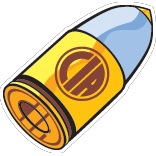 From the comments of our “Saving Comics” post, Tim Stoltzfus went back to this Milennium Eve 1999 post by Warren Ellis that had the same message, and a call to arms on other matters:
From the comments of our “Saving Comics” post, Tim Stoltzfus went back to this Milennium Eve 1999 post by Warren Ellis that had the same message, and a call to arms on other matters:
You see, you and me, we don’t have the clout, the cash or the staff to see done the things that should be done — forcing comics into these new sales points, getting the right work in front of the right people. All you and I have is the direct market, because that’s all the major companies are interested in supporting.
So it behooves us to bolster the failing direct market system if we want to continue selling comics in the current paradigm. And I’d like to, because I’d like to continue paying for my house and stuff. And that means changing the comics store culture.
That means getting rid of the talking Jar Jar Binks stand-up in the doorway. It means racking the T&A stuff somewhere else. It means focussing more on graphic novels than back-issue bins. It means displaying your comics in the window, not the bloody toys, and making your standalone floor displays out of comics and graphic novels, not those stupid pewter figures for pretending to be sodding elves in role-paying games with. It means talking to customers, not just standing idly by or peering over your till with an air of false superiority. It means talking to the people who work in and run the shop, telling them what you think works, telling them what you want to read. It means call-out sections where you rack by creator, and all the comics shops I know of that have tried it have discovered that it works very well indeed. Because people who don’t come from the comics-store culture will walk into stores and look, not for a title, but the new Neil Gaiman, or the new Alan Moore, or the new Frank Miller.
Ellis and Larry Young’s writing of the period are very much the foundation of a lot of today’s indie sales methods — and some of the concerns are exactly the same.
How much has changed? How much hasn’t? What do you think?
Blog: PW -The Beat (Login to Add to MyJacketFlap)
JacketFlap tags: Comics Still Wonderful In Spite Of It All, Digital Comics, Add a tag

Today’s pair of links about digital comics.
• David Brothers, who generally has a very aggressive stance regarding moving into digital, pisses off comics retailers by suggesting day and date would not really hurt shop sales:
The entire industry is in flux, the Big Two are trying to figure out what still sells, and digital comics are subject to that upheaval. How is it going to shake out? I don’t know, and I’m not even qualified to guess. Maybe digital comics will find an entirely new market. Maybe the entire industry will collapse. I don’t know. But the dental floss analogy is damaging. It positions digital comics as something ephemeral, worthless in the face of the might of the Direct Market. That’s great for the self-esteem of retailers, but how are consumers supposed to take that? Doesn’t that suggest a lack of faith in the format? It’s like falling dominoes: publisher expresses a lack of faith in the format, doesn’t pursue the format aggressively enough, consumer notices that lack of faith and doesn’t embrace the format, and the format fails.
I agree of course, but the numbers I’ve seen are still modest. What will be the digitally native comic that really pushes things?
• Meanwhile, Matt Seneca looks at the same question in a Balboa-like expedition to the bleeding edge of comics storytelling:
We’re deep into what will become the history of webcomics at this point, with a readership for the comics medium’s online format that soundly eclipses even the best selling Diamond-distributed Wednesday books. Deal with it, folks — not only will the adventures of the Doom Patrol and the Agents of Atlas, if not necessarily Batman and Wolverine, be digital-exclusive by the end of the decade, so too will a large part of the interesting new alt- and art-comix work. It’s already started: Dash Shaw’s Pantheon-published print version of BodyWorld might be hanging off those Borders shelves now, but you could read the thing free online for like a year before that.
Seneca’s discussion centers on formalists in the Shaw mode: Connor Willumsen, David Gray, and the Bret Easton Ellis for the bunch, Blaise Larmee. None of them are producing anything that will go on your iPhone — all these examples rely on the scrolling natures of the web browser, so maybe the iPad. They are abstract in some cases, but affecting. And they aren’t like “traditional” webcomics at all.
Larmee was recently the subject of a controversial TCJ interview where he came off as churlish and egotistical:
Larmee: I insist on staying in the present moment. 2001 exists, for me, in real time. This is different than Young Lions. For Young Lions I asked myself, “how will I win the Xeric grant?” and every subsequent action was structured toward this specific thing/event. Now my questions change in each panel and are a
15 Comments on Digital Comics: the future of commerce and the future of art?, last added: 3/16/2011Display Comments Add a Comment
Blog: PW -The Beat (Login to Add to MyJacketFlap)
JacketFlap tags: Literacy, They hate us!, Comics Still Wonderful In Spite Of It All, Jeff Lemire, Literary Comics, Add a tag
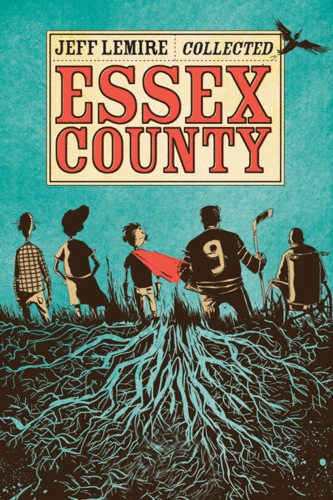
When Jeff Lemire’s much-admired Essex Trilogy made the Top Five of the Canada Reads competition
Essex County was the first graphic novel to make it all the way to the five finalists that are debated on the air each year. While this was a significant milestone and it gave it an edge in the competition, it was also ultimately its downfall. Every interview or discussion or critique of the book started with broad comments about the form, and what it means for a graphic novel to be part of the competition, whether it can even be considered a novel, let alone one that can be compared in terms of value or merit or impact or significance to more traditional literature. As a result, there was hardly any discussion of Jeff Lemire’s work and what is unique about it, because so much attention was spent talking about the form. The book being part of the competition became less about this particular work of fiction by this specific artist with a unique voice in Canadian (and worldwide) literature, and more about the entire medium’s struggle to be taken seriously and accepted as art. In other words, the same tired old debate people have been having since the term “graphic novel” was invented. A debate that I’d like to think most of us who read comics are over.
The Canada Reads judges seemed to have prejudged ESSEX COUNTY, mostly as not representing the kind of literacy they wanted the contest to champion. For instance Ali Velshi — best known as that loud guy who used to be on CNN — said:
At this point he was interrupted, but he came back to that idea later and added: I am coming into this competition with the very committed idea (…) that I need this to end up as a competitiont that causes people to read more, and I’m not sure [Essex County] is that solution. (…) I don’t think that’s gonna solve our problems of low literacy levels. I don’t think that’s gonna solve our problem of creative and interpretive thinking.
Debbie Travis had the most old skool dismissal of comics as lit:
I think it’s a nice book. It really is a good book. But as the essential novel? It’s like saying tweeting with 140 character gets you writing. No, it doesn’t get you writing. It actually takes it in the other direction. So the danger of that book… I think this is a shortcut. I read this in an hour and a half.
Travis, incidentally, is not an author, educator or librarian — the usual guardians of culture — but a former model and interior designer manqué who hosts TV shows
Blog: PW -The Beat (Login to Add to MyJacketFlap)
JacketFlap tags: Comics, Blogosphere, Weekend Reading, Comics Still Wonderful In Spite Of It All, Working for a Living, Add a tag
By Jen Vaughn
In as unstable job market as we have today, three men have decided to give their art their full time attention, their all. Writer and artist of Let’s Be Friends Again!
, Curt Franklin and Chris Haley, respectively started their witty webcomic on the print comic world and what it means to really be friends in 2008. Eugene Ahn aka nerd rapper Adam WarRock quit his career as an attorney in 2010 in order to follow his heart and let his mouth fly. Today they announced the joining of their two ventures into LBFA!, Inc.made a song about LBFA, specifically the friendship, before they had planned the ‘merger’ if you will. But now, these three intrepid Tennessee natives men are all back in Memphis, the dusky town of their origins. I asked Euge how he though moving from Washington DC to Memphis would change his music: “Well, it will make me have a thicker Southern accent, my speech is already slowing down, but it won’t change my music much. By being around other people A) like comics and B) are creating, I’ll have responsive people to bounce ideas off of. It will mean more ideas and more songs, faster.”We look forward to fruits of your full-time creative work, guys! If you have yet to read, Let’s Be Friends Again, have a good sit and start right hereAdam WarRock while you’re at it. Yeeeeaaahh.—
, cartoonist and librarian, awaits the day a song is written about her comics. Until then, she’ll just listen to profilic Brian Fukushima’s song, Jen Vaughn, on repeat.View Next 20 Posts



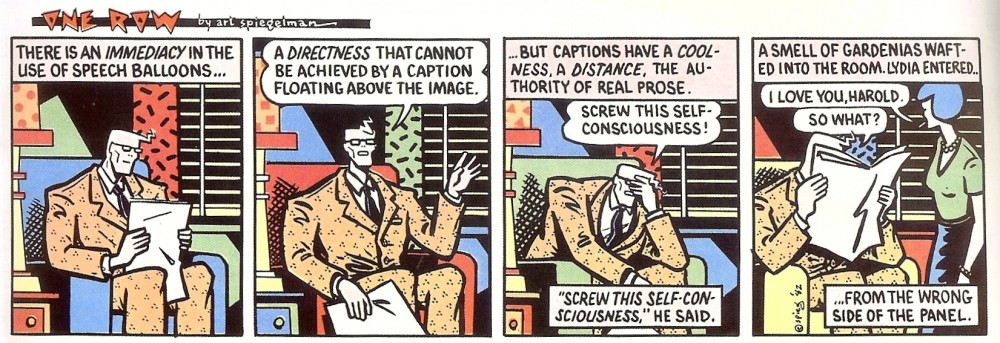


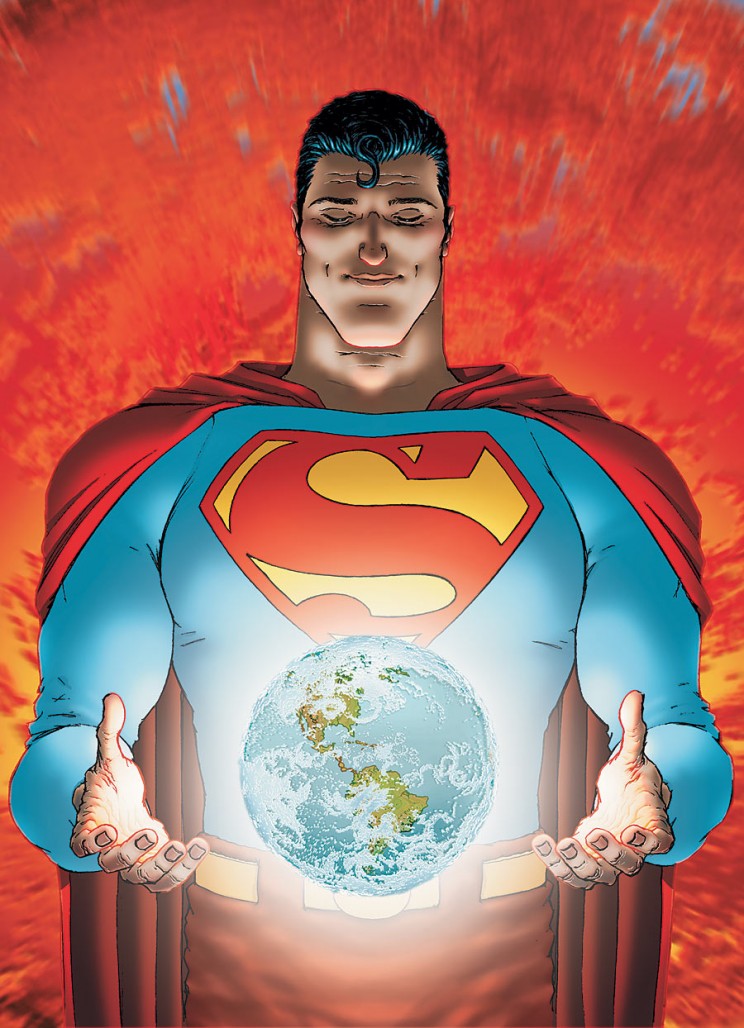
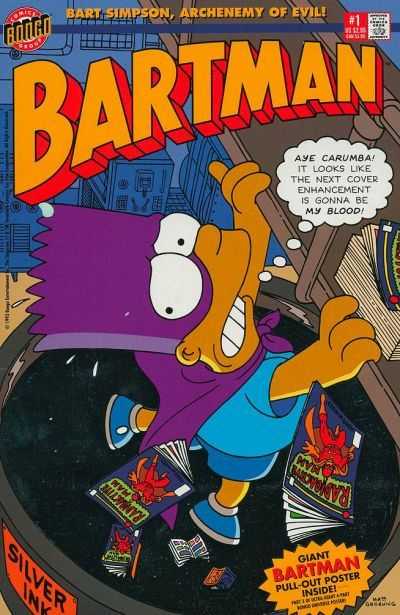
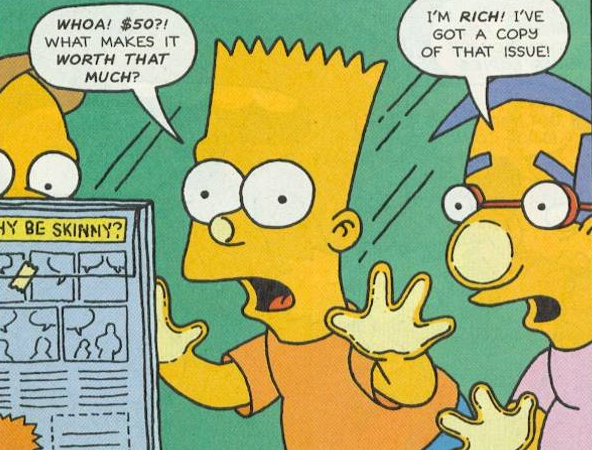
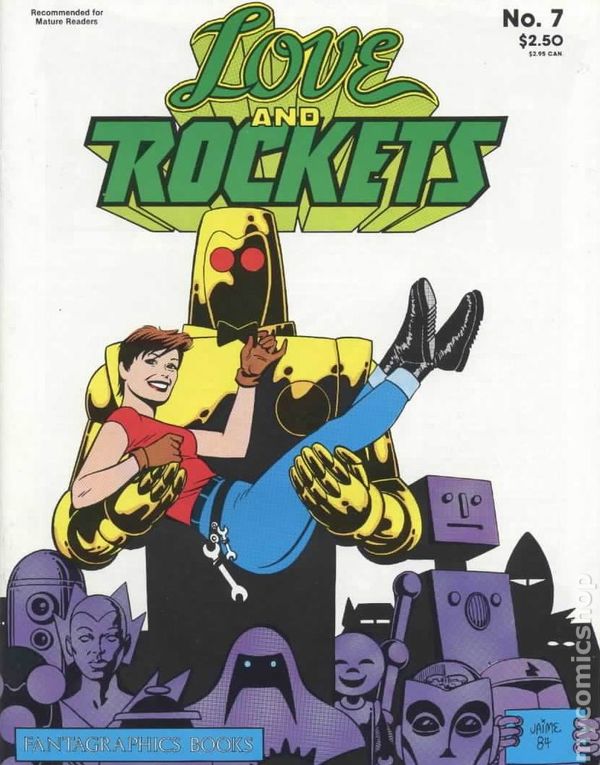
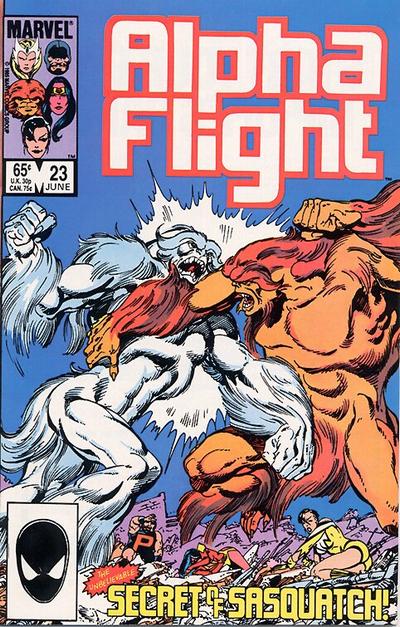
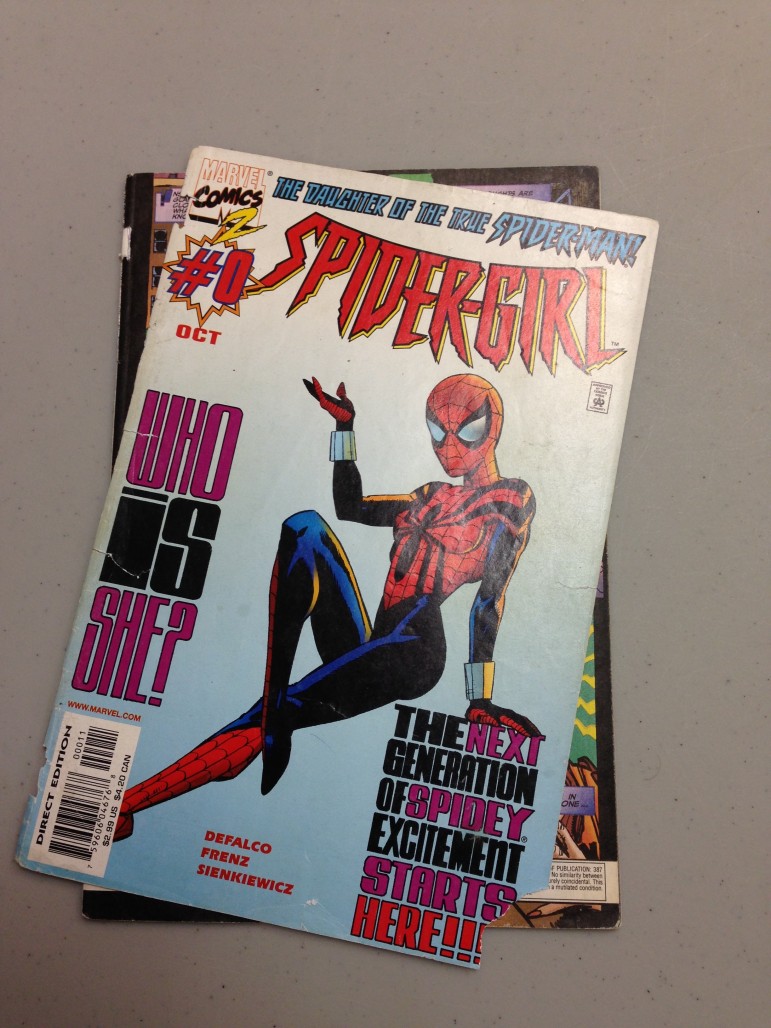
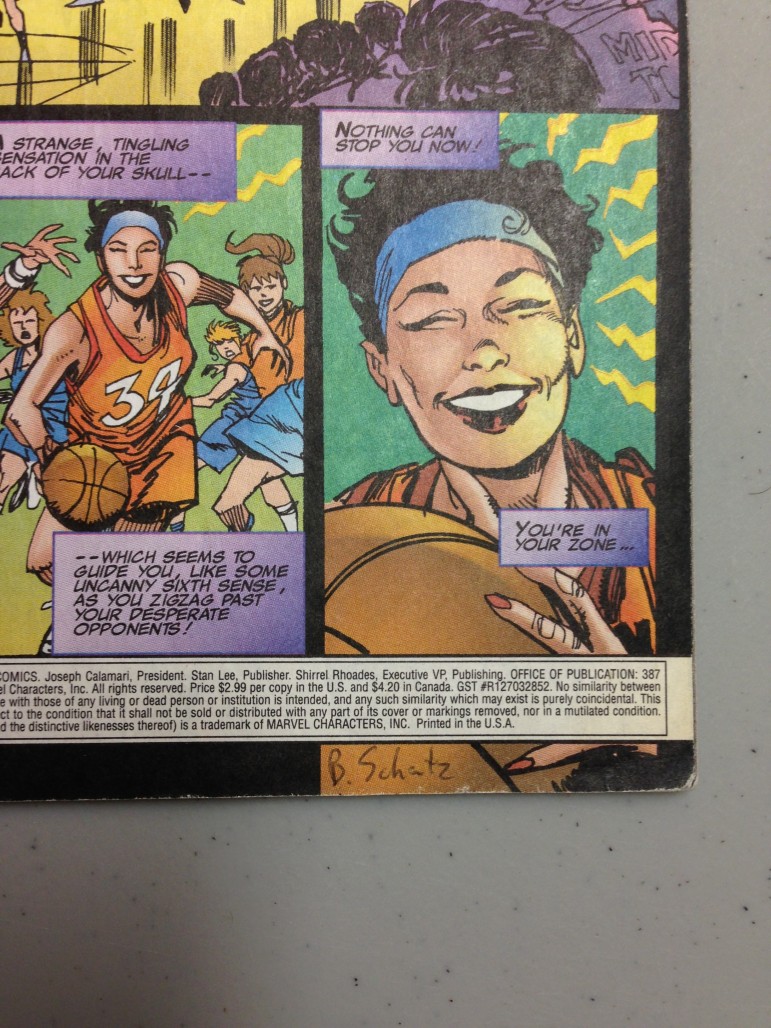
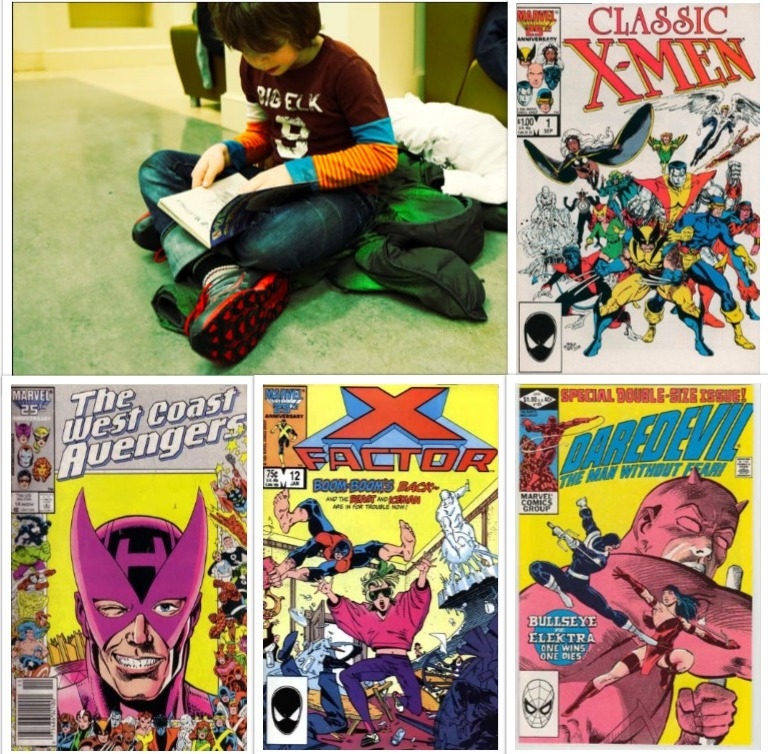



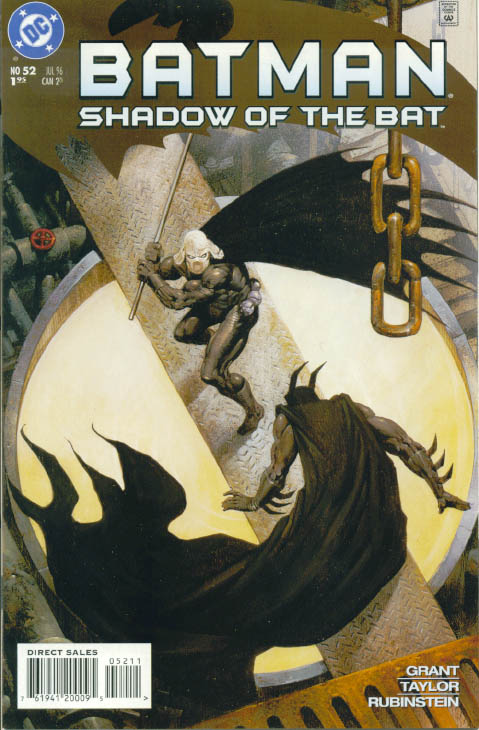
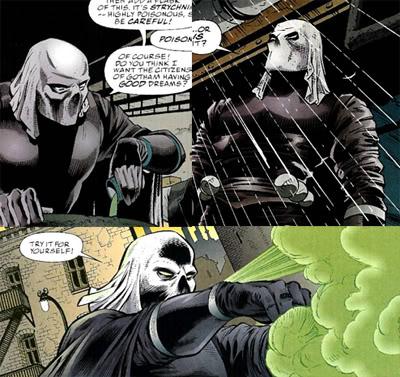
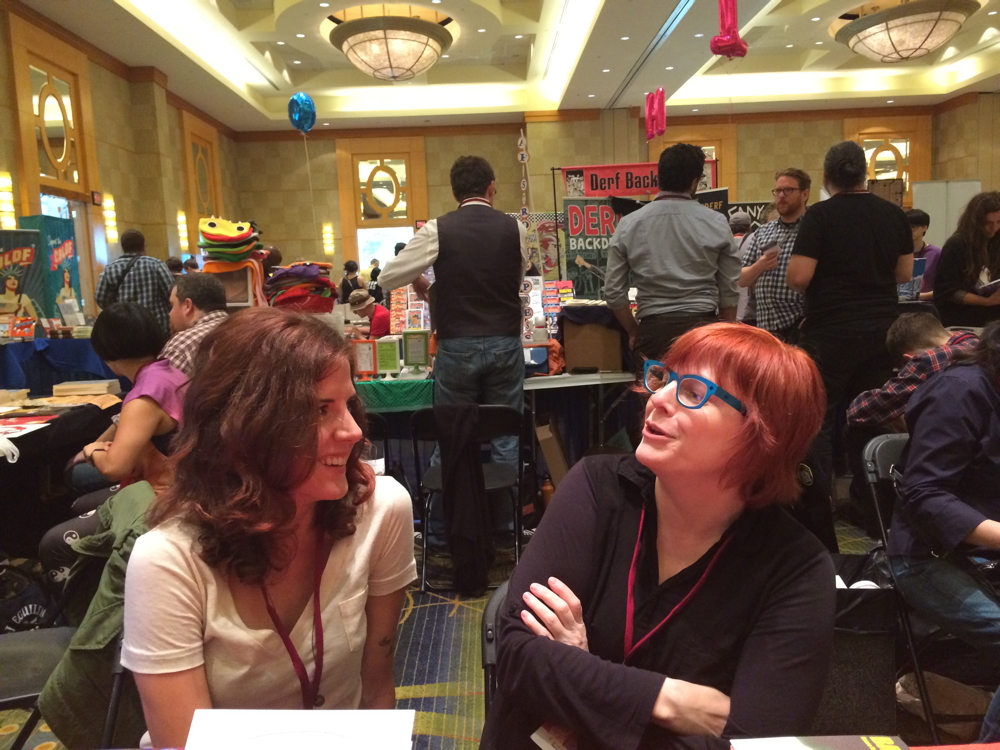
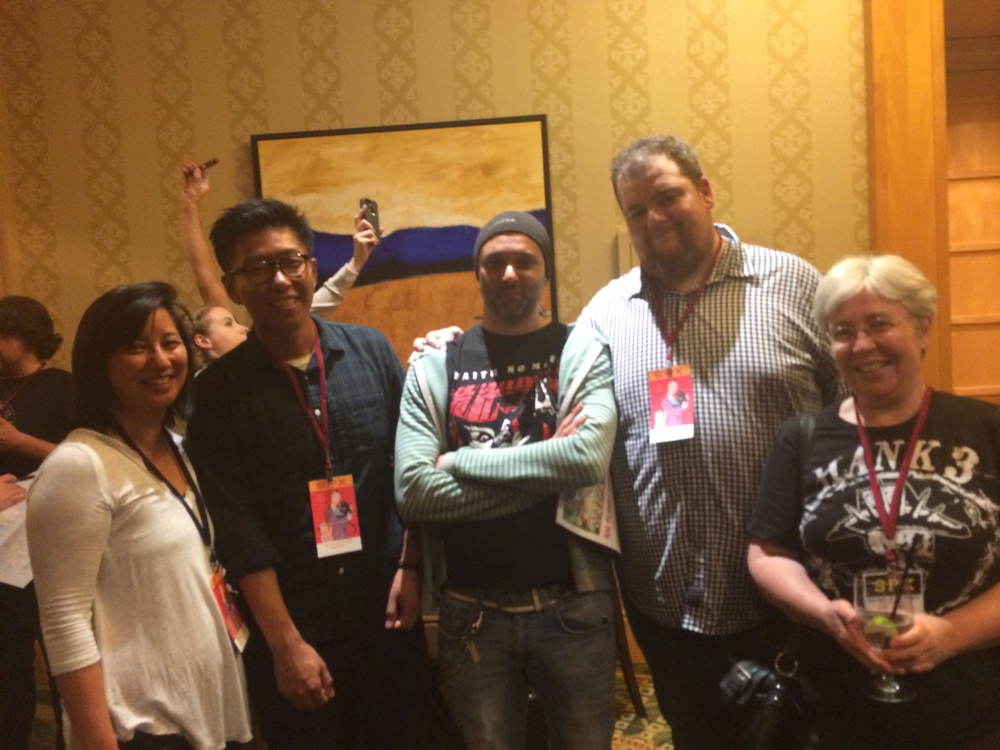


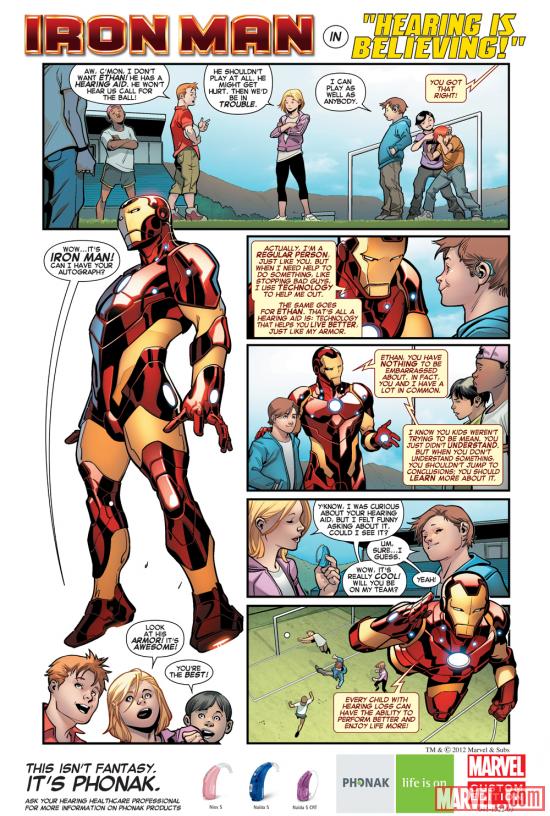
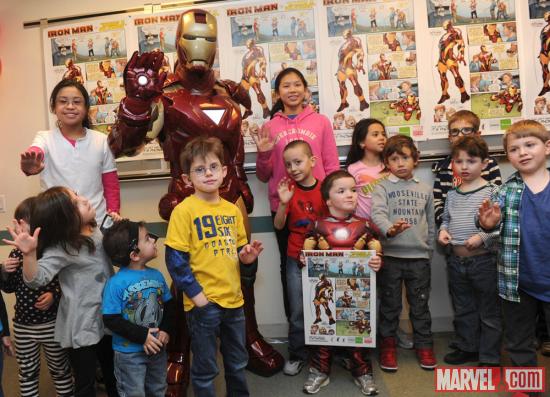

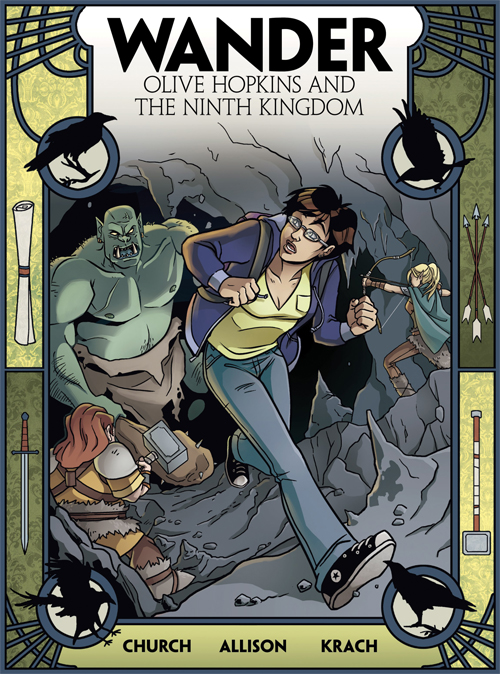
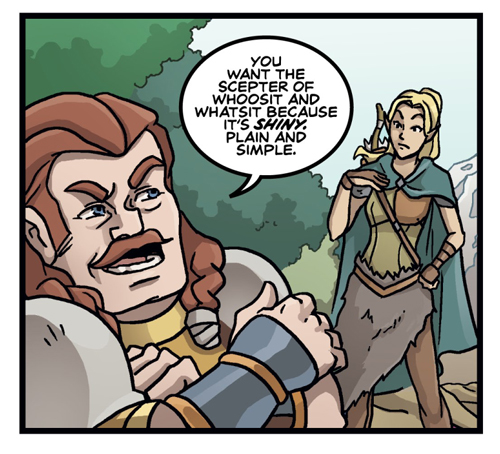
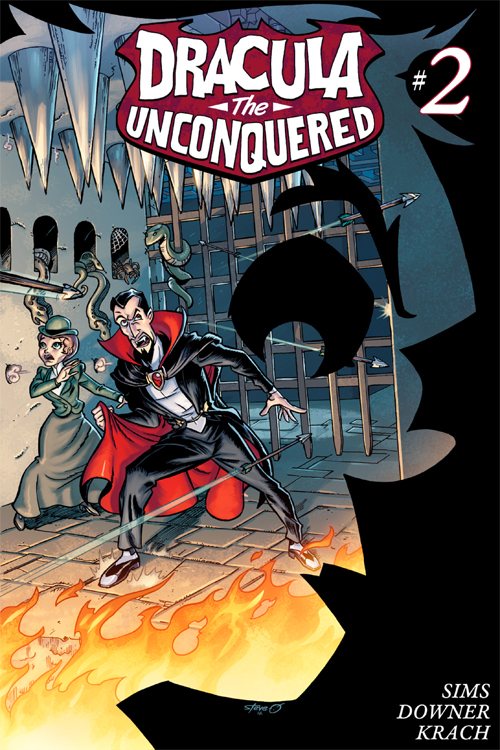
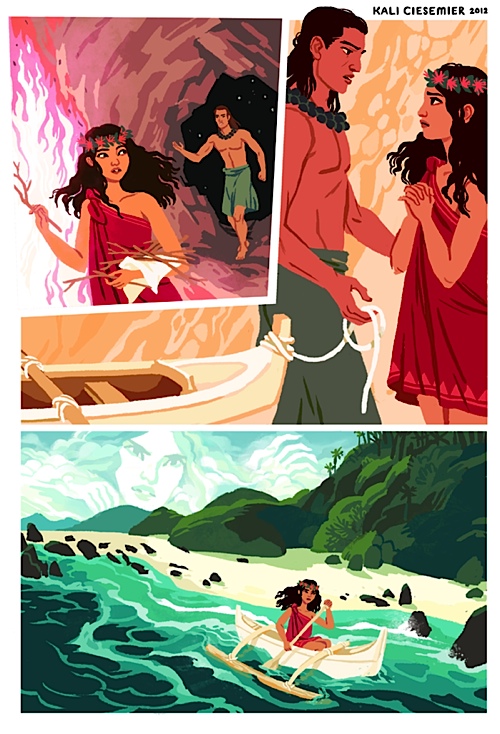
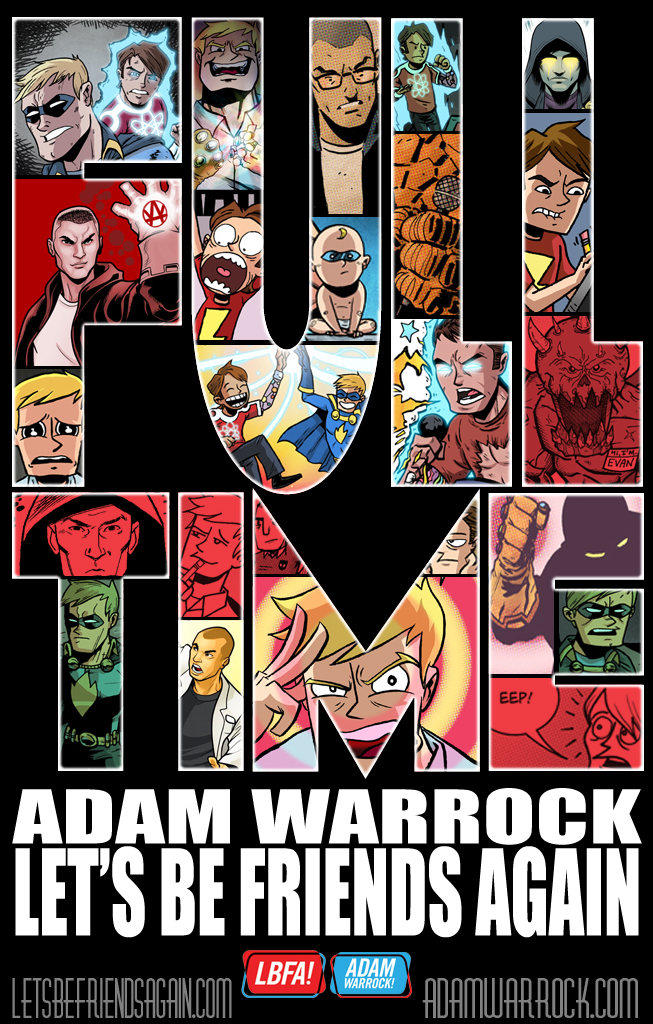
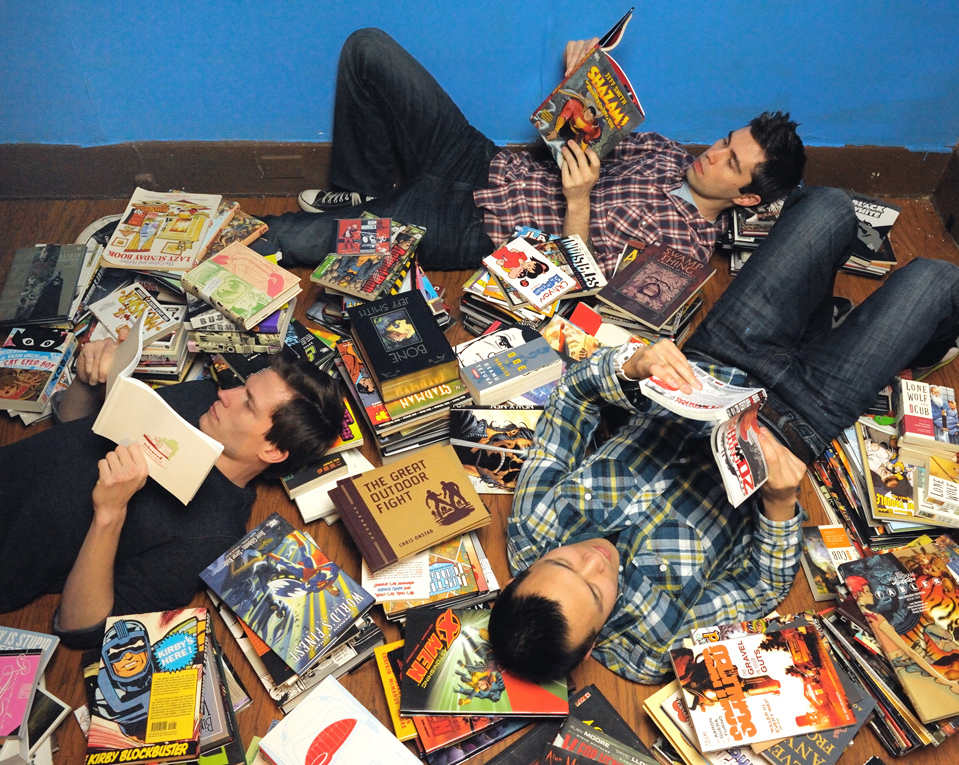
“Harvery”? I think not.
Bry